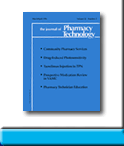 |
 |
RISK FOR OSTEOPOROSIS
AND ANTIRESORPTIVE THERAPIES IN PATIENTS WITH CROHN'S DISEASE
Josette Makhzoum, Gilles Jobin, Pierre Dagenais, Sylvie
Makhzoum, and Sylvie Perreault
To request full article click here.
BACKGROUND: The risk of osteoporosis is greater in patients with inflammatory bowel disease (IBD) because of several related risk factors such as the prolonged use of corticosteroids, the malabsorption of calcium and vitamin D following small-bowel disease or small-bowel resections, and the inflammatory process resulting from the illness. A reduction in bone mineral density (BMD) has been reported in 30-75% of patients with IBD (Crohn's disease or ulcerative colitis). An evaluation of the risk factors of osteoporosis should be performed to identify those in need of antiresorptive drug therapies (ART) and/or calcium and vitamin D supplements.
OBJECTIVE: To determine whether patients with Crohn's disease at risk for osteoporosis or already having decreased BMD were identified as such and treated with appropriate therapy.
METHODS: A cross-sectional study was performed among 54 white patients with Crohn's disease who attended a gastroenterology specialized clinic between January and March 2002. All patients with Crohn's disease having an outpatient medical visit were asked to participate in the study. Patients who agreed to the study were questioned for Crohn's disease activity index (CDAI) and osteoporosis risk factors such as nutrition, lifestyle, and corticosteroid therapy. Serum bone-specific markers and nutritional status were assessed. BMD test of the lumbar vertebrae (L2-L4) and the nondominant hip were assessed with dual-energy X-ray absorptiometry if the participants did not have a BMD test in the year prior to the study. ART and calcium/vitamin D use were assessed through a questionnaire and on community pharmaceutical drug services in the 2 year period prior to the evaluation.
RESULTS: Mean age and CDAI severity score were 41.5 years and 145, respectively. None of the patients was evaluated for BMD in the year prior to the study. Osteopenia at the nondominant hip and/or lumbar vertebrae was seen in 29 patients. Eighty-two percent of patients with a T score under –2 SD had not been exposed to ART; 84% of patients with more than 4 risk factors for osteoporosis and a T score less than –1.5 SD had not received ART. Moreover, 88% of patients with a T score less than –1.5 SD and receiving corticosteroid therapy had not been treated with ART.
CONCLUSIONS: The presence of osteoporosis risk factors and osteopenia had not been recognized and treated in our population. Adequate osteoporosis management should be implemented in patients with Crohn's disease to reduce the occurrence of osteoporotic fractures.
J Pharm Technol 2005;22:9-14.
To request full article click here.
|
|
|
||
|

